Deloney Store
Introduction
Text-to-speech Audio
Charles “Pap” Deloney opened Jackson Hole’s first general store in 1899 in his home. In 1906, the store expanded to its own location. Deloney chose a modern brick veneer thanks to the newly established brickyard. A series of buildings like the school, church, and hotel utilized the new material, but the Deloney Store is the only survivor from this period. Pap Deloney supplied a wide variety of goods to support the needs of the rural community, but candy proved to be his best-seller. When he went out of town, he left the store open and patrons left notes for what they took. But Pap had to lock up the candy in the safe, because that had a habit of disappearing.
Images
Deloney Home and First Store
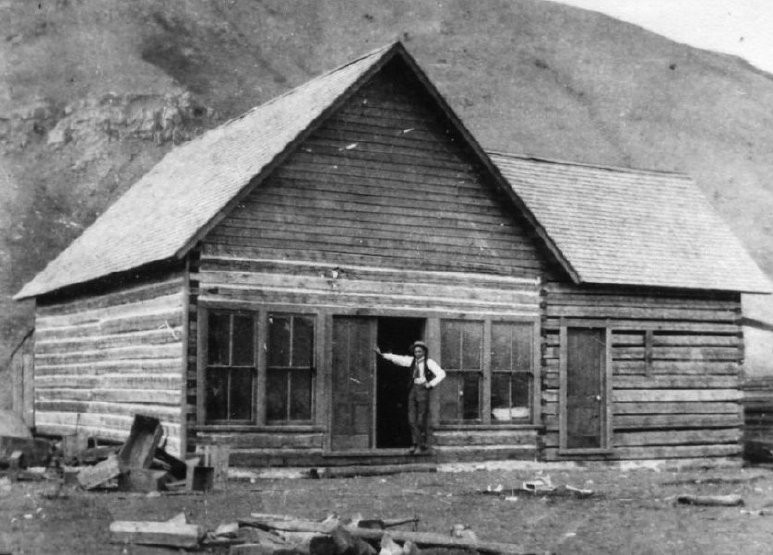
Deloney Brick Store and Deloney Garage Behind
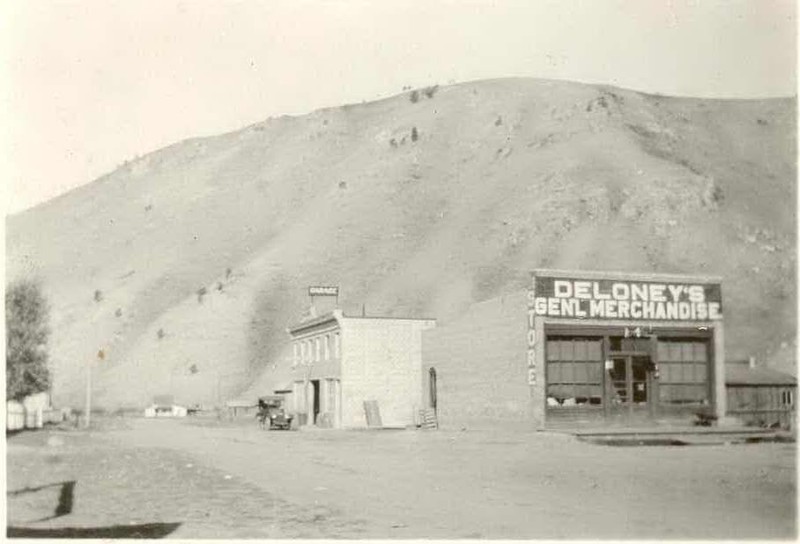
Charles "Pap" & Clara Deloney
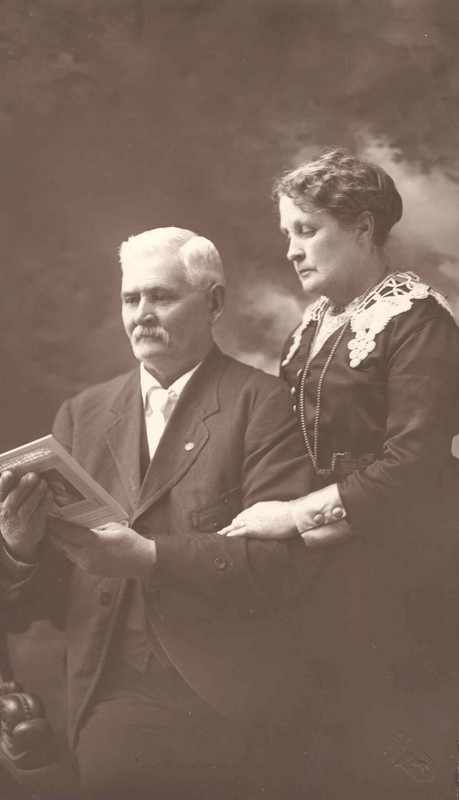
Dr. Cunnington and Ralph Gill In front of old Deloney Store
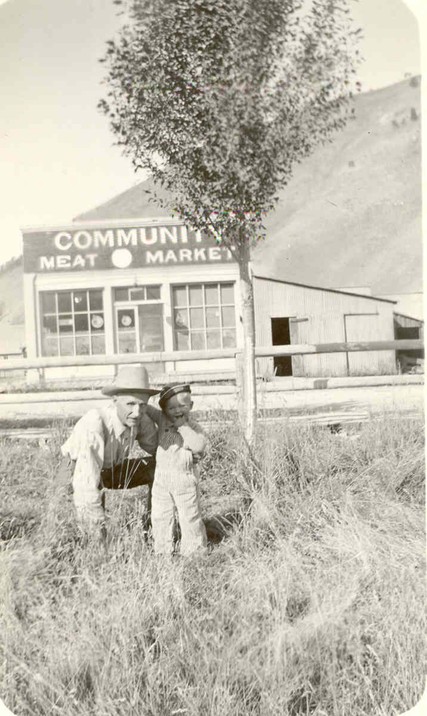
Homer Richards and Slim Lawrence outside new Jackson Hole Museum
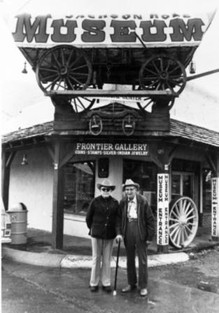
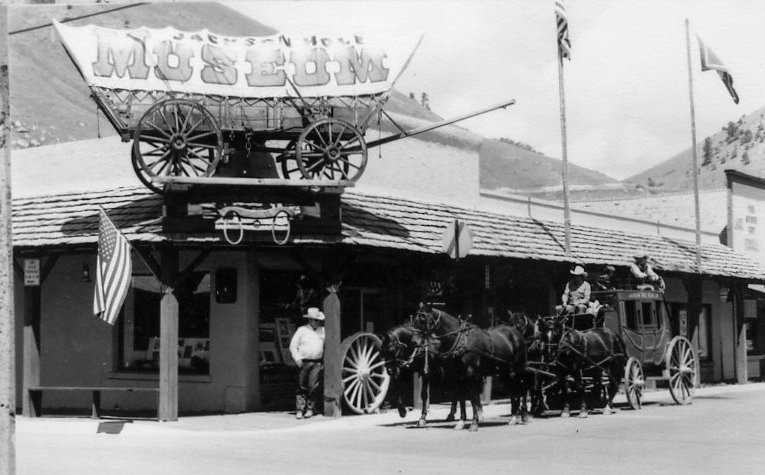
Backstory and Context
Text-to-speech Audio
When the new Deloney Store was built in 1906, it was part of a new phase sweeping the small town of Jackson. Brick was quickly replacing the old log architecture, thanks to a new brickyard west of town. Within quick succession, the Deloney Store, the LDS Church, School, Hotel Jackson, a residence and the future Jackson State Bank building were built using brick veneer. Today, only the Deloney Store remains from these original buildings. The brick quality was weak, and the material ceased being used after only a few years. There was still a preference in town for the use of log or wooden structures.
Charles “Pap” Deloney first arrived in Jackson Hole sometime in 1897 for a brief appointment as the Forest Supervisor for the new Forest Reserve south of the new Yellowstone National Park. He returned home to his family in Evanston, but Jackson Hole had claimed another resident. When word of the first school reached him, Deloney moved his family and opened the first general store in 1899. Rather than homestead, Deloney purchased a lot in the emerging community of Jackson, and built a combined residence and store on today’s Cache Street. Early photos of Jackson show the Deloney residence as being prominent in this location.
In 1900 Maggie Simpson and Grace Miller were dividing up lots for the first town center. Deloney’s general store was the only place in town to purchase goods, and he was quickly outgrowing the small space at the front of his house. He purchased a lot on the corner of the future Glenwood Street and Deloney (named for Charles) Avenue. At the time, the roads had no names, and names weren’t necessary since you could view all of the buildings in the area from any vantage point. Deloney was originally called Second Street when names became necessary around 1914 when the town was incorporated.
In order to celebrate the importance of the first commercial store structure in town, Deloney chose brick. It was a modern-looking material, and imbued the store with a sense of strength and permanence. Wooden logs were the typical materials, and were susceptible to fire and rot. Bricks, however, conveyed the intention that the town of Jackson was here to stay. Deloney quickly acquired the nickname “Pap,” due to his open nature, and desire to support his community. Familial names like “Pap,” “Pappy,” “Dad,” and “Uncle” were popular in remote mountain areas like Jackson Hole. Several of these men are so-called in the early history because helping out your neighbors was a necessity to survive. Whatever you needed to order, Pap Deloney could secure it for you.
Pap was also notable for one other valuable resource: candy. Chores on the ranch or homestead were difficult, and recreational time was rare. Having a sweet treat was something adults and children alike looked forward to. So much that Pap had to acquire a safe, because candy was the item most stolen from the store. Pap would regularly be working other jobs or helping neighbors, and patrons were accustomed to writing notes for the goods they took. At certain times of the year, Pap would go through his books and take account of what each family owed and collect the balances. Usually he waited until the cattle had gone to market, and cash was on hand. However, Pap had to lock up the safe with the candy in it because the locals couldn’t quite be trusted with that commodity. Pap also began storing amounts of cash for the community, in the absence of a formal banking system. He kept organized stacks in the safe, alongside the candy. He sold a wide variety of goods, like lumber, welding materials, washtubs, and tools. Clothing, dry goods, and occasionally fresh produce were also staples for the homestead. Regular ads appeared in the newspapers announcing the new shipments, and neighbors gathered at the store to exchange news and catch up.
After Pap died in 1925, the store continued on serving the community as a butcher shop, and a clothing store. In 1958 Homer Richards purchased the building to partner with his longtime friend Slim Lawrence to open the first museum. Lawrence was an avid collector and amateur archaeologist and had been wanting to display his collections. The museum remained in this location until 2021. Today, the old Deloney Store is one of the oldest buildings in town, and the only original brick building. A layer of stucco was applied sometime in the 1910s, but the brick is preserved underneath.
Sources
Cassity, Michael, "Deloney Store," Form prepared for the Teton County Historic Preservation Board, 1999.
"Deloney Store," If Walls Could Talk Series. Jackson Hole Historical Society & Museum. https://youtu.be/YYVdusozHEg?si=h30AMJrRc_3FAPRk
"Deloney Store," Jackson Town Register Nomination. Teton County Historic Preservation Board, 2022.
Jackson Hole Historical Society & Museum
Jackson Hole Historical Society & Museum
Jackson Hole Historical Society & Museum
Jackson Hole Historical Society & Museum
Jackson Hole Historical Society & Museum
